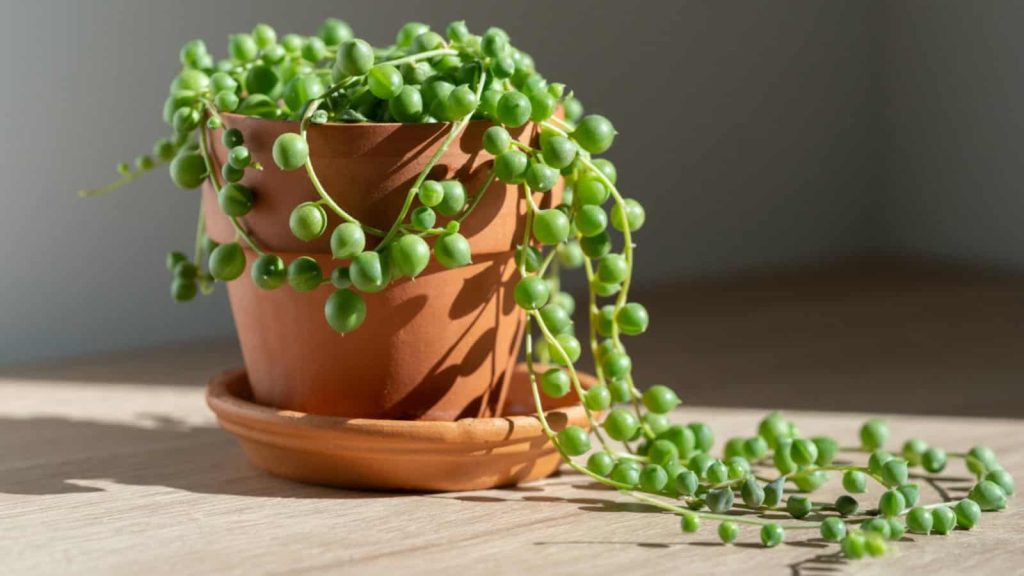Curio is a genus of succulent known for their trailing foliage and unique, plump leaf shape. Native to South Africa, there are about 20 species of Curio, including String of Pearls, String of Dolphins, String of Tears, String of Bananas, and String of Watermelons. When grown in proper conditions, Curio plants produce delicate white flowers. In their native environment, they can be found crawling along the ground, forming dense mats in the shade of other plants and rocks. Curio succulents are toxic to pets and humans.
Curio succulents will take as much sun as you can possibly give them.
Water with filtered or rain water when 100% of the soil is dry. Note that succulents do not like wet leaves, especially Curio succulents, as their leaves often sit on the top of soil. Bottom watering is a great way to ensure leaves stay dry while the soil absorbs as much water as necessary.
Curio succulents do not require high humidity to thrive. Ideal temperature for these plants is between 60-80 degrees.
In nature, Curio succulents sprout roots wherever the stem touches soil, which makes them a very easy plant to propagate. Simply cut a vine in between two leaves and lay your strand on top of some soil to allow it to root. Alternatively, place the cut end into a glass of water and allow the roots to grow!
When your Curio succulent leaves aren’t plump, but the plant looks green and healthy otherwise, underwatering is most likely the issue. When Curio succulents are really thirsty, their leaves will begin to look skinny, deflated, or creased. In order to restore plumpness in your Curio, you must first check the soil to see if it is really 100% dry, then give it a big drink of water. Keep checking the soil over the next few weeks to ensure it gets the right amount of water to replenish the leaves.
